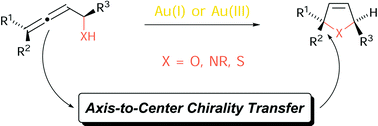The golden gate to catalysis
Abstract
The use of gold in homogeneous catalysis is a relatively new field of transition metal catalysis, but has already witnessed spectacular achievements. By virtue of their unique ability to activate carbon–carbon double and triple bonds as soft, carbophilic Lewis acids, gold salts are highly efficient catalysts for the formation of C–C, C–O, C–N, and C–S bonds. Moreover, they are capable of activating C–H bonds of aromatic and other substrates, opening unprecedented pathways for their functionalisation. By using chiral allenes as substrates, gold catalysts can even be applied in stereoselective target-oriented synthesis.


 Please wait while we load your content...
Please wait while we load your content...